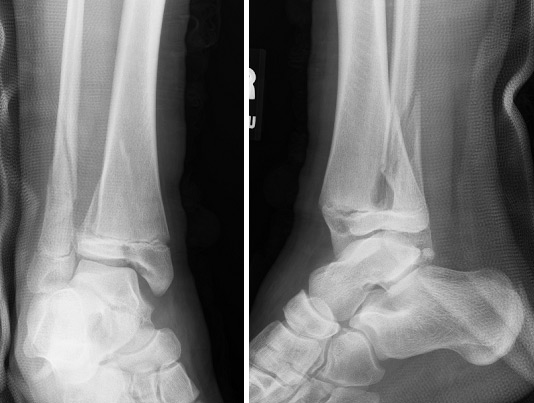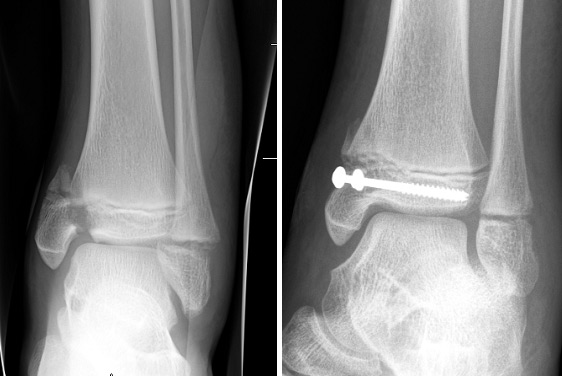
 POSNA.org
POSNA.org

A displaced fracture occurs when the bone breaks and shifts out of position. Many displaced fractures can be treated with manipulation and casting. Some displaced fractures will require surgery to keep the bone lined up correctly, especially if the joint surface is involved.

Ankles are most commonly broken by a twist or fall. Ankle fractures happen in sports, scooter and skateboard riding, and sometimes just by falling on even ground or off of a stair.
If your child has a swollen and painful ankle and refuses to walk after a fall or a twist, you should bring your child to your doctor.
Most ankle breaks heal within 6 to 12 weeks. Return to sports should be careful. Your doctor will let you know when sports are safe. Even after the ankle bones heal, your child may need more time to work on ankle motion or strength.
X-rays give usually give enough information to treat an ankle fracture. Sometimes a CAT scan will be used to give more information about the bone surfaces or growth plate.
If the bone is out of place, your doctor may manipulate the bone to push it back into place. Sometimes surgery is needed to put the ankle back into the proper position. Sometimes, metal screws or plates must be put in the bone to hold the position.
Most children do not need formal physical therapy and are able to regain all their motion and strength on their own. Sometimes your physician will recommend a home exercise program.
Most children do not have any long term problems if their ankle fracture is treated properly. However, some fractures that involve the growth plate need to be followed to make sure the growth plate continues to grow. This is usually the case if the growth plate fracture required a manipulation, needed surgery, or if the joint surface was involved. There is also a small risk of future arthritis in fractures that involve the joint, even if they are treated properly.
After the bone is healed and your child can walk and run without a limp, your doctor will likely allow them to return to sports.